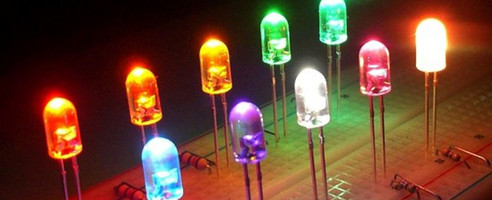LED is a semiconductor device that converts electricity directly into light radiation. The LED consists of a semiconductor crystal (chip) on a substrate, a housing with contact leads and an optical system. The light emitted by the semiconductor crystal enters a miniature optical system consisting of a reflector and a transparent LED housing. By changing the configuration of the reflector and lens, the required radiation direction is achieved: LEDs can be either narrowly or broadly directional.
Why does the LED shine?
The LED crystal, like conventional diodes, consists of two types of semiconductor - with electronic (n-type) and hole (p-type) conductivity. At the interface of different types of semiconductors there is an energy barrier ("gap band") that prevents p-n junctions. Under the influence electric field recombination occurselectron-hole pairwith light quantum emission. However, not every p-n junction emits light. To achieve this, two conditions must be met: firstly, the band gap in the active region of the LED must be close to the energy of light quanta in the visible range, and secondly, the probability of radiation during the recombination of electron-hole pairs must be high, for which the semiconductor crystal must contain there are few defects due to which recombination occurs without radiation. In practice, one pn junction in a crystal is not enough to satisfy both conditions, and therefore it is necessary to manufacture multilayer semiconductor structures (“heterostructures”). For the study of such heterostructures, Russian physicist academician Zhores Alferov received Nobel Prize 2000.
The color of the LED depends on the band gap in which electron-hole pairs recombine, that is, on the semiconductor material, and on doping impurities. This is precisely why the appearance of blue LEDs was so late.
The brightness of an LED depends on the current passing through it. The greater the current, the more electrons and holes enter the recombination zone per unit time. But the current cannot be increased indefinitely. Due to the internal resistance of the semiconductor and the pn junction, the diode will overheat and fail.
Separately, it should be said about white LEDs. As you know, pure white light does not exist in nature, and what we call white light is actually a combination of green, blue and red colors. Since the LED crystal emits pure light, it cannot emit white light. Therefore, to obtain white light, manufacturers have to resort to some tricks. There are 2 ways to get White light from LED:
- color mixing using RGB technology, when three crystals are located close to each other inside the LED: red, green and blue. The simultaneous glow of all 3 with the same brightness will give the output white light. By adjusting the brightness of individual colors, you can achieve the desired shade of white. This method is usually used in the manufacture of LED screens.
- Cover blue or ultraviolet LEDs with layers of phosphor.
Features of LEDs
- With proper heat dissipation, the LED heats up little;
- LED emits light in a narrow part of the spectrum, which makes its color pure, and UV and IR radiation are usually absent.
- The LED does not contain fragile glass elements. It is mechanically strong and reliable, and its service life can reach 100,000 hours, which is almost 100 times longer than an incandescent light bulb and 5 to 10 times longer than a fluorescent lamp.
- LED is a low-voltage electrical device, which means it is safe.
Light-emitting diode, or light-emitting diode (SD, LED, LED from English “ Light-emitting diode", is a semiconductor device with an electron-hole junction (pn junction) or a metal-to-conductor contact that produces optical radiation when an electric current passes through it in the forward direction. The LED crystal produces optical radiation in a rather narrow spectrum. Its spectral characteristics depend primarily on chemical composition semiconductors used in its manufacture. In other words, the LED crystal emits a specific color (if we are talking about LEDs in the visible range), in contrast to a lamp that emits a wider spectrum, and where a specific color is filtered out by an external light filter.
Story
Electroluminescence was first discovered and described in 1907 by scientist Henry Joseph Round, who discovered it while studying the passage of current in a metal-silicon carbide (SiC) pair and noted yellow, green and orange glow at the cathode.
These experiments were later, independently of Round, repeated by O. V. Losev in 1923, who, experimenting with a rectifying contact from a pair of carborundum - steel wire, discovered a weak glow at the point of contact of two dissimilar materials - electroluminescence of a semiconductor transition (at that time the concept "semiconductor junction" did not yet exist). This observation was published, but the significance of this observation was not understood at the time and therefore remained unexplored for many decades.
Probably the first LED emitting light in the visible range of the spectrum was manufactured in 1962 at the University of Illinois (USA) by a group led by Nick Holonyak.
Diodes made from indirect gap semiconductors (for example, silicon, germanium or silicon carbide) emit virtually no light. However, in connection with the development of silicon technology, work is actively underway to create silicon-based LEDs. The Soviet yellow LED KL 101 based on silicon carbide was produced back in the 70s, but had a very low brightness. IN Lately Great hopes are associated with the technology of quantum dots and photonic crystals.
What is the difference?
LED light emitting technology is fundamentally different from traditional technology glow from light sources such as incandescent lamps, fluorescent lamps and discharge lamps high pressure. There is no gas or filament in the LED; it is not fragile. glass flask and potentially unreliable moving parts.
The main difference LED sources light from traditional ones is that LEDs use a completely different principle of light generation and use completely different materials. A less obvious difference is that LED lighting blurs the line between lamp and luminaire. In LED lighting technology, the “bulbs”, which are LEDs, are inseparable from the “luminaire”, namely the housing, electronics and lenses.
LED characteristics

The current-voltage characteristic of LEDs in the forward direction is nonlinear. The diode begins to conduct current starting from a certain threshold voltage. This voltage makes it possible to fairly accurately determine the semiconductor material.
Modern ultra-bright LEDs have less pronounced semiconductivity than conventional diodes. High-frequency pulsations in the supply circuit (the so-called “needles”) and surges of reverse voltage lead to accelerated degradation of the crystal. The rate of degradation also depends on the supply current (nonlinear) and crystal temperature (nonlinear).
Price
Price powerful LEDs, used in portable spotlights and car headlights, today is quite high - about $8-10 or more per piece. As a rule, small flashlights and household lamp assemblies use several dozen not very powerful LEDs.
By the beginning of 2011, the cost of high-power (1 W or more) LEDs had decreased and started from $0.9. The cost of heavy-duty ones (10W or more P7 and CREE M-CE $15-20 CREE XM-L 10W 1000Lm) is about $10.
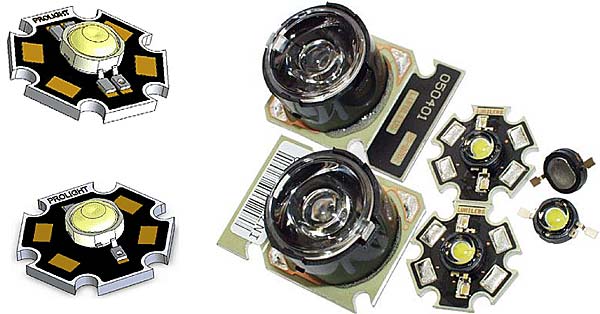 Advantages
Advantages
Compared to other electric light sources (converters of electricity into electromagnetic radiation in the visible range), LEDs have the following differences:
High luminous efficiency. Modern LEDs are on par with sodium LEDs in this parameter. gas discharge lamps and metal halide lamps, reaching 150 Lumens per Watt;
High mechanical strength , vibration resistance (no filament and other sensitive components);
Long service life- from 30,000 to 100,000 hours (when working 8 hours a day - 34 years). But it is not infinite either - with prolonged operation and/or poor cooling, the crystal is “poisoned” and the brightness gradually decreases;
The range of modern LEDs varies- from warm white (2700 K) to cool white (6500 K);
Low inertia- turn on immediately at full brightness, while mercury-phosphorus (fluorescent-economical) lamps have a turn-on time of 1 second to 1 minute, and the brightness increases from 30% to 100% in 3-10 minutes, depending on the ambient temperature environment;
Number of on-off cycles do not have a significant impact on the service life of LEDs (unlike traditional light sources - incandescent lamps, gas-discharge lamps);
Different radiation angle— from 15 to 180 degrees;
Low cost indicator LEDs, but relatively high cost when used in lighting, which decreases as production and sales increase (economies of scale);
Safety— no need for high voltage;
Insensitivity to low and very low temperatures . However high temperatures LEDs are contraindicated, as are any semiconductors;
Environmental friendliness- absence of mercury, phosphorus and ultraviolet radiation, Unlike fluorescent lamps.
Applications of LEDs
In street, industrial, household lighting(including LED strip);
As indicators - both in the form of single LEDs (for example, the power indicator on the instrument panel), and in the form of a digital or alphanumeric display (for example, numbers on a clock);
An array of LEDs is used in large outdoor screens and in creeping lines. Such arrays are often called LED clusters or simply clusters;
In optocouplers;
Powerful LEDs are used as light sources in lanterns and traffic lights;
LEDs are used as sources of modulated optical radiation (signal transmission via optical fiber, remote controls, Internet);
In the backlight of LCD screens ( Cell phones, monitors, TVs, etc.);
In games, toys, icons, USB devices, etc.;
In LED road signs;
In flexible PVC light cords Duralight.
If after reading this article you still have questions about LED equipment, we will be happy to help you choose a lamp that is right for you!

Interest in LEDs is growing every day, and this is happening much faster than the scope of their application is growing. But it seems that consumers and producers, buyers and sellers, do not fully understand the trends in this area. And only bold decisions designers are taking full advantage of the full potential of LEDs.
Gone are the days when only scientists worked on LEDs. Now even schoolchildren know about this product. The LED is distinguished by the fact that it emits light that differs in its characteristics and prospects in its field of application. They are actively introducing LEDs into interior design and lighting design.
In order to imagine as fully as possible the full significance of such a development as LEDs, you need to understand what an LED is, find out its disadvantages and positive aspects.
What is LED?

An LED is a device consisting of semiconductors. It is designed to process electric current into light radiation, that is, electromagnetic radiation in the visible part of the spectrum. As for the name, the abbreviation “LEG” stands for “Light Emitting Diode” and means the same “LED”.
What does an LED consist of?
The LED consists of a semiconductor crystal with an optical system and a contact pin. All this simple design is located in the housing. Modern LEDs are not at all similar to those that were previously used only for indication.

Main advantages of LEDs
The LED converts electric current into light radiation almost without generating heat, as a result of which the efficiency of the LED is quite high.
The light produced by an LED is, from a designers point of view, cleaner.
Compared to other lamps, the service life of LEDs is significantly longer.
The LED design is durable and reliable.
No LEDs required for operation high voltage, which means they are safe.
Producing white light using an LED.

LED - producing white light
There are three ways to produce white light using an LED.
1. Using RGB technology (the abbreviation stands for “RED GREEN BLUE”), that is, by mixing three colors - green, blue and red. LEDs of three colors are randomly placed close to the matrix. Using an optical system, these colors are mixed.
2. Phosphors of the same three colors are applied to the surface of the LED, which operates in the ultrasonic range - red, green, blue. In its principle, the method of operation in this case is similar to the operation of a fluorescent lamp.
3. A yellow-green phosphor or a red-green phosphor is applied to the blue-emitting LED. After mixing the colors, white light is obtained.
Optical and electrical characteristics of LEDs
LEDs are low voltage devices. If you use this device for indication, 2-4 volts of voltage at a current of up to 50 mA will be sufficient. If you use LEDs for lighting, the current in the circuit will fluctuate from several hundred mA to one mA at a voltage of 2-4 volts. In LED modules, LEDs in electrical circuit are connected in series, like a garland, and require a voltage of 12 or 24 volts to operate.
LEDs operate from direct current in the circuit, therefore, when connecting, it is very important to observe its polarity, otherwise the device simply will not work or will completely fail. Manufacturers often indicate them on the LED module housing operating voltage. According to the rules, for one diode it should not exceed 5 volts.
LED brightness depends on radiation pattern and axial force luminous flux. The light emitted by an LED is in a solid angle from 4º to 140º, the latter depending on the design of the LED. Color parameters are determined by chromaticity coordinates, the so-called wavelength of light and color temperature. The efficiency of an LED is determined by the ratio of the luminous flux to the energy expended on it.

Why do you need to stabilize the current for LEDs?
As is known, in a working circuit the current strength is directly proportional to the voltage, that is, any change in voltage will lead to an increase in current. If the permissible current values are exceeded, the service life of the LEDs can be reduced or they can be completely damaged. Also, with an unstable current, the brightness of the LED will constantly fluctuate.
Is it permissible to adjust the brightness of LEDs?
You can adjust the brightness of the LEDs, but with one note. Brightness adjustment is possible using the pulse-width modulation method, but in no case by reducing the voltage. Pulse width modulation can be achieved using a PWM control unit (often this unit is combined with a color control collector and power supply). The method is that a pulse-modulated current is created in the circuit instead of a constant one, and the brightness of the glow will depend on the width and frequency of the current pulses. Now the brightness of the LED can be adjusted. You can also change the color temperature of the LED using the dimming method.
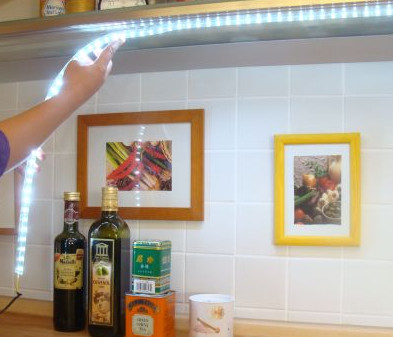
What determines the service life of an LED?
There is an opinion that LEDs are durable. But that's not really correct opinion. The lifespan of LEDs depends on their heating, and this directly depends on how much current passes through them. It follows from this that LEDs with higher power will last less than those with less power. On average, the lifespan of high-power LEDs ranges from 20 thousand to 50 hours. If the brightness of the LED has decreased, this is a sign of its aging. If the brightness decreases by 30% or more, the LED should be replaced with a new one.
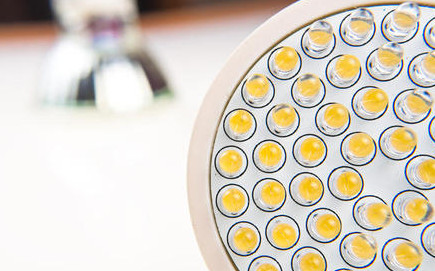
Are LEDs harmful to eyesight?
The properties of the light emitted by an LED are very similar to the characteristics of light from a fluorescent lamp. This means that LED light is similar to monochromatic light, which is the main difference from solar or incandescent lighting. At the moment, there is no in-depth research in this area, so it is difficult to say whether it is good or bad. There is also no data on the harm of light emitted by LEDs.
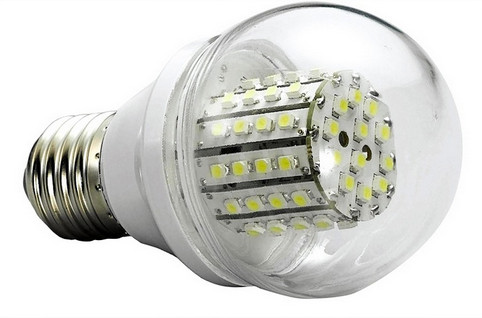
Where is it most beneficial to use LED lighting?
The area where LEDs are used is quite extensive. They can be used almost everywhere, you can only exclude industrial premises, in which they are allowed to be used as emergency lighting.
Designers widely use LEDs in their designs because of their pure color. LED lighting will also be indispensable in conditions of severe energy savings or high requirements for electrical safety.
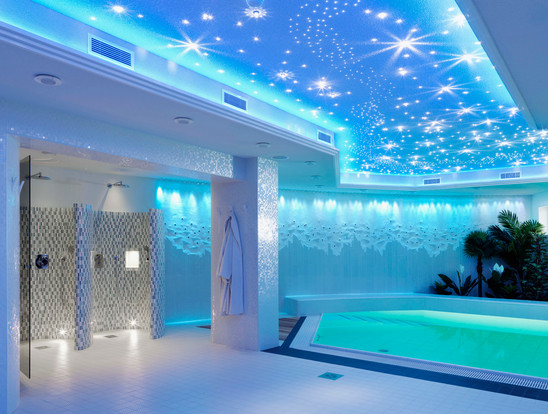

Applications and capabilities of LEDs
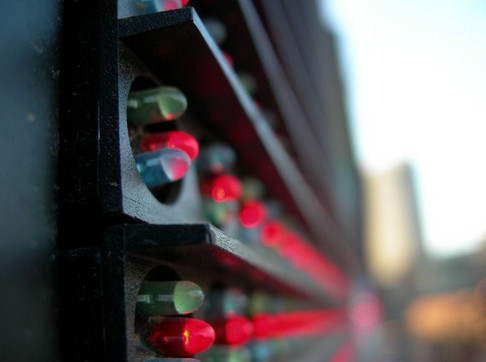
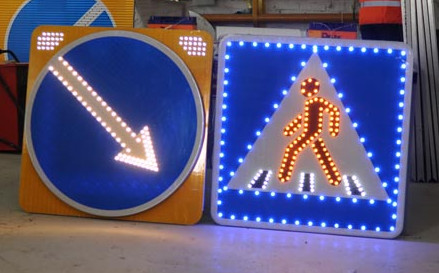
LEDs were first invented around the 60s of the 20th century. But mass production and their use as the main light source was quite limited, since their production required quite large Money, and the white and blue colors were missing. Due to these factors, the use of LEDs has been limited. They were mainly used to adjust traffic, in medical technology and for transmitting information in optical fiber systems.
Only by the mid-90s did super-bright LEDs begin to appear, and in the early 2000s - blue and white ones. Gradually, the cost of LEDs decreased, which attracted the attention of manufacturers and sponsors to this light source. After this, the area where LEDs are used has expanded significantly. At first they were used as indicators in household electronic devices and as a backlight in liquid crystal screens. After it became possible to obtain any shade using primary colors, LEDs began to be used to design displays that allow the display of animation and full-color graphics.
Due to their low power consumption, LEG technologies are the most optimal material For decorative lighting. Unlike fluorescent lamps, the service life of LEDs is much longer - about 6-8 times. Ease of assembly and anti-vandal qualities make LEDs competitive along with other artificial sources.


